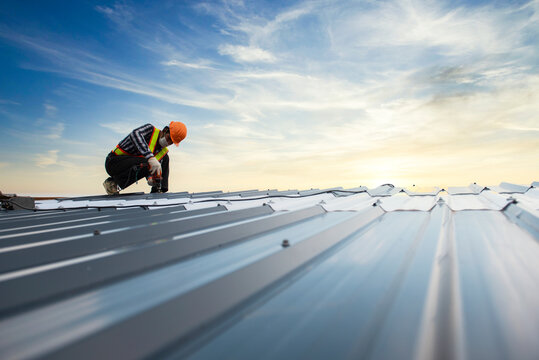Introduction to Sustainable Roofing
More than just a protective layer over buildings, commercial roofs increasingly serve as platforms for environmental initiatives. By adopting sustainable roofing solutions, businesses aim to shield their assets and contribute meaningfully to ecological welfare. As organizations strive to minimize their carbon footprint, the shift towards sustainable roofing options is driven by several factors, including regulatory requirements, corporate responsibility, and public expectations.
Sustainable roofing encompasses a holistic approach, moving beyond the choice of materials to include careful planning of installation methods and long-term maintenance strategies. By understanding the numerous benefits and options, companies can make informed decisions that align with their operational and sustainability objectives.
Benefits of Sustainable Roofing
Switching to sustainable roofing solutions presents many advantages, beginning with unparalleled energy efficiency. Eco-friendly roofs maintain consistent indoor temperatures, significantly reducing dependency on artificial climate control systems. This efficiency results in cost savings on energy bills, creating a win-win scenario for businesses focused on sustainability and profitability. Additionally, environmentally conscious roofing solutions often come with the advantage of reduced heat islands in urban settings, subsequently contributing to a more balanced local climate. In the era of heightened environmental awareness, the role of the commercial roofing industry takes center stage in promoting sustainability.
Another notable benefit of adopting sustainable roofing is increased property value. As eco-friendly building features continue to attract buyers and tenants who prioritize sustainability, these roofs add a competitive edge to commercial properties. Furthermore, they help extend the lifespan of buildings by providing superior weather resistance, thereby reducing the frequency and cost of repairs. This extended lifespan ensures businesses maximize their investment while maintaining a commitment to environmental stewardship.
Popular Eco-Friendly Roofing Materials
A wide variety of materials caters to the needs of environmentally conscious roofing, and the selection of materials for residential roofing is equally diverse, focusing on durability and protection from the elements. Green roofs, characterized by their layers of vegetation, are especially effective at offering insulation and enhancing urban biodiversity. They improve the aesthetic value of rooftops, support local wildlife, and mitigate rainwater runoff, thus playing a vital role in urban planning. On the other hand, solar panels are a more technology-driven option, transforming rooftops into energy-generating powerhouses that contribute to a building’s energy independence. Cool roofs, made from highly reflective materials, reflect more sunlight and absorb less heat than standard roofs, which can lead to a noticeable reduction in cooling costs. Each of these materials brings unique benefits, making it possible for businesses to choose according to their needs, climate conditions, and sustainability goals.
Innovative Roofing Technologies
Roofing technology is transforming, with innovative solutions reshaping traditional practices. Reflective coatings enhance the energy efficiency of existing roofs by increasing their ability to reflect sunlight and reducing overall thermal absorption. Such technologies are especially beneficial in sunny regions where heat management is a priority. Another technological advancement is the integration of rainwater harvesting systems. These systems collect and store rain directly from rooftops, providing a sustainable water source for non-potable applications and alleviating pressure on municipal water supplies.
Meanwhile, thermal insulation within roofing systems significantly contributes to maintaining comfortable indoor environments. This insulation is a barrier against temperature fluctuations, reducing the energy needed for heating and cooling. Together, these technologies exemplify how modern roofing strategies tackle ecological challenges and offer practical, cost-saving solutions for businesses.
Maintenance Tips for Long-Lasting Roofs
Ensuring the optimal performance and longevity of a sustainable roof requires regular maintenance. Conducting scheduled inspections helps identify leaks or wear that could compromise the roof’s integrity. Proactive maintenance, such as cleaning debris, confirming proper drainage, and monitoring for signs of damage, is crucial in preserving the roof’s functionality and appearance.
Consistent upkeep keeps the roof performing at its best and extends its lifespan, safeguarding the initial investment and minimizing the need for larger, costlier repairs down the road. An effective maintenance strategy ensures businesses enjoy the full benefits of their sustainable roofing choices over time.
Case Studies on Sustainable Roofing
Practical examples of successful sustainable roofing initiatives offer valuable insights and inspiration. Businesses from various sectors have adopted green roofing solutions, reaping financial and environmental rewards. A standout case involves a company that incorporated solar panels atop their office building, achieving significant reductions in energy expenses and gaining recognition for environmental leadership.
These case studies illustrate the tangible benefits of sustainable roofing and highlight the versatility and adaptability of such solutions across different industries and climates. By sharing these success stories, businesses can better understand how to implement and benefit from eco-friendly roofing systems.
Future Trends in Commercial Roofing
The future of commercial roofing is poised for exciting developments, with promising trends gaining momentum. Innovative roofing systems integrate sensors and Internet of Things (IoT) technology, actively monitor roof conditions, and optimize real-time performance. These systems can anticipate maintenance needs, improve resource efficiency, and enhance building safety through automated responses.
The push for green building certifications continues to grow, driving further innovation in eco-friendly roofing materials and methods. As sustainability becomes an essential component of architectural design, the adoption of forward-thinking roofing solutions will likely accelerate. This development underscores the ability of roofing to significantly contribute to fulfilling broader sustainability objectives. It highlights the significance of keeping updated on the newest trends and technologies in the industry.

